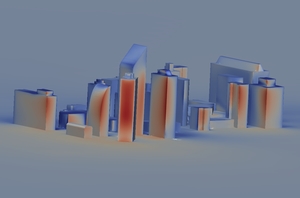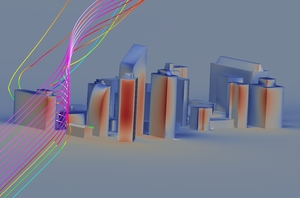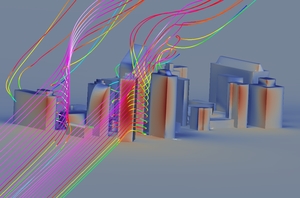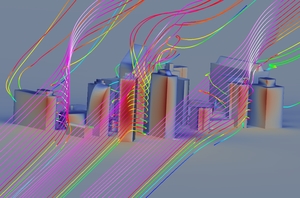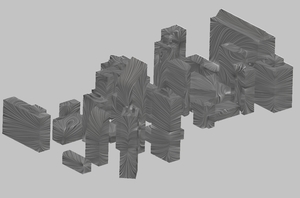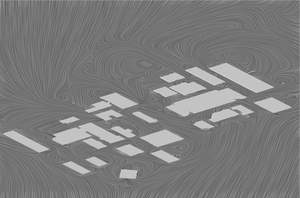Tall buildings
Optimising the design of a building before any construction begins is the best way to avoid time and cost overruns. Ensuring that individual structural components work properly, designing HVAC equipment and placement, devising smoke management systems to protect building occupants and structures from disaster, modelling airflow for occupant comfort, and analysing environmental and structural effects are all possible through the use of Computational Fluid Dynamics.
Bridges, stadiums, tall buildings and skycrapers due to their overall scale and increasing complexity in architectural shape are highly wind sensitive structures.
A kind of small city composed of buildings of many geometrical shapes (squared, rectangular, cylindrical) and different heights has been modelled.
The snappyHexMesh utility was used to produce the grid. Different levels of refinement were fixed to better capture the sharp edges of the buildings, which is clearly visible on the right pictures.
Pressure field on the walls has been added. It shows the buildings that are hit hard by the wind and those who are immune to it.
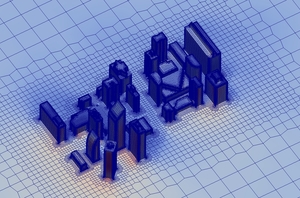
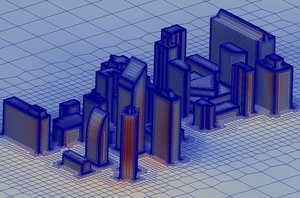
Following sequence of pictures show streamlines going through the tall buildings of the city. The upper view permits to better observe where recirculating zones (quiet spaces) are located. Hovering over some thumbnails will enlarge the pictures.
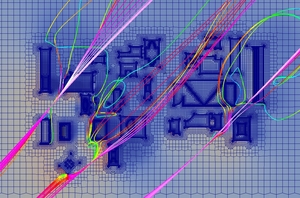
The two images on the left show the surface streamlines or wall shear stress lines. They also provide insight into how the flow behaves between the buildings of the city.
It helps, for example, to obtain a safer design avoiding the worst wind and blast scenarios. It can help to better locate playgrounds, gardens for residents of neighborhoods and improve the comfort of pedestrians and urban residents.
